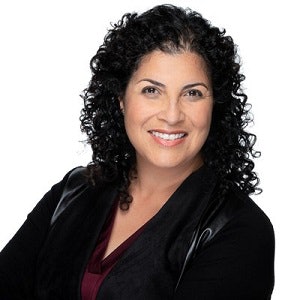Rural students were poised to struggle amid COVID-19.
The Federal Communications Commission found that a quarter of Americans – 14.5 million people – in rural areas lack broadband internet access. Pre-pandemic, rural completion rates were already low with only 42% of students from rural high schools graduating college within six years, according to a 2018 National Student Clearinghouse Research Center study.
 Marta Urquilla
Marta UrquillaThat’s why Education Design Lab, a nonprofit for innovation in higher education, will focus on supporting rural community colleges in its new initiative, called “Building Rural Innovation, Designing Educational Strategies” or “BRIDGES.”
Funded by a $1.9 million grant from Ascendium Education Group, a student loan guarantor and education philanthropy, the three-year project will help five community colleges to improve college access and better meet local workforce needs.
“From the digital divide, education deserts and other long-running disparities in access to education, health care and economic opportunity, rural America has long been an afterthought in our nation’s efforts to boost postsecondary opportunity and learner success,” said Amy Kerwin, vice president of education philanthropy at Ascendium Education Group. “At a time when COVID-19 is exposing wage and equity gaps, this laboratory for innovation will help identify new impact-oriented approaches for fostering greater educational and economic opportunity in historically-underinvested rural communities.”
In the first phase of the initiative, Education Design Lab will start by researching the challenges facing rural community colleges, their students and their surrounding economies based on currently available data. The organization will also invite rural community colleges to submit proposals as part of a design challenge. By January, it will select five community college partners that will work alongside Education Design Lab staff to devise new models for bolstering economic opportunity for their students and their surrounding communities. The colleges’ experiences and conclusions will ultimately be distilled into a manual that can serve as a guide for other rural institutions.
 Dr. Vanessa A. Sansone
Dr. Vanessa A. SansoneThe organization chose to zero in on community colleges because they tend to serve the underresourced, “learners that higher ed was never really designed to serve in the first place,” said Education Design Lab’s chief program officer Marta Urquilla.
And the goal is not just to come up with solutions that focus on graduating rural students, but to look at them “holistically,” in the context of the economic health of their communities and what role their community colleges could play.
“Oftentimes higher ed is focused on completion, and yes, that’s important,” she added. “But we’re really interested in what is going to position [students] for life-long success?”
She expects there to be many possible answers to that question. Community colleges might leave the initiative with new partnerships with local industries or k-12 education, plans to invest in student entrepreneurship, virtual internship ideas, opportunities to expand broadband access – solutions as diverse as rural communities themselves that take into account racial inequities and “historic disinvestment.”
Dr. Vanessa Sansone, who researches rural students as an assistant professor of higher education at the University of Texas at San Antonio, emphasized that, to work with rural populations, it’s crucial to recognize that diversity – and that rural doesn’t mean White. She noted that rural students include Native American students, Latinx students from the Texas-Mexico border region and Black students from the Mississippi Delta, among others.
“Rural is not homogenous,” Sansone said. There are “intersectional identities at play,” and that impacts what rural students need.
While Education Lab’s idea for a rural community college program preceded the pandemic, COVID-19 put a spotlight on the needs of rural students – and the communities that surround them.
“Local economies need a way to quickly recover in this crisis, and workers and learners need a way to quickly find work that is meaningful and that pays them a medium wage or higher,” Urquilla said. “And so, can we leverage the opportunities and the resources that are available to us right now – real-time, dynamic labor market data and an understanding of which are the industries that are driving economic growth, where there are in-demand jobs, what are the skills that can take someone from a low-wage or entry-level position and match them to higher-wage earnings.”
Sansone emphasized that inequities for rural students are unfortunately deep seated. Many rural communities face high poverty rates, and students have always had issues with broadband access, sometimes driving to the nearest city to submit applications or fill out admissions forms, but now everything is online. Scholars and advocates like her feel like they’ve “had to yell even louder” on behalf of rural students during the crisis.
But she also described this as a time of hope. From her research, she’s found rural students eager to give back to their communities and fill workforce gaps that they’ve seen growing up. As they witness healthcare disparities in rural areas amid COVID-19, she expects that sense of responsibility and “communal identity” to be even stronger.
“That doesn’t leave them when they enter into our college spaces – this idea that this is a community effort and a want to give back,” she said.
Urquilla also sees this as a moment for growth.
“Our hope is that for these five institutions … will embark on a new experience to not only connect their learners to the credentials they need but also to economic mobility and pathways that benefit their communities as a whole,” she said.
Sara Weissman can be reached at [email protected].





















